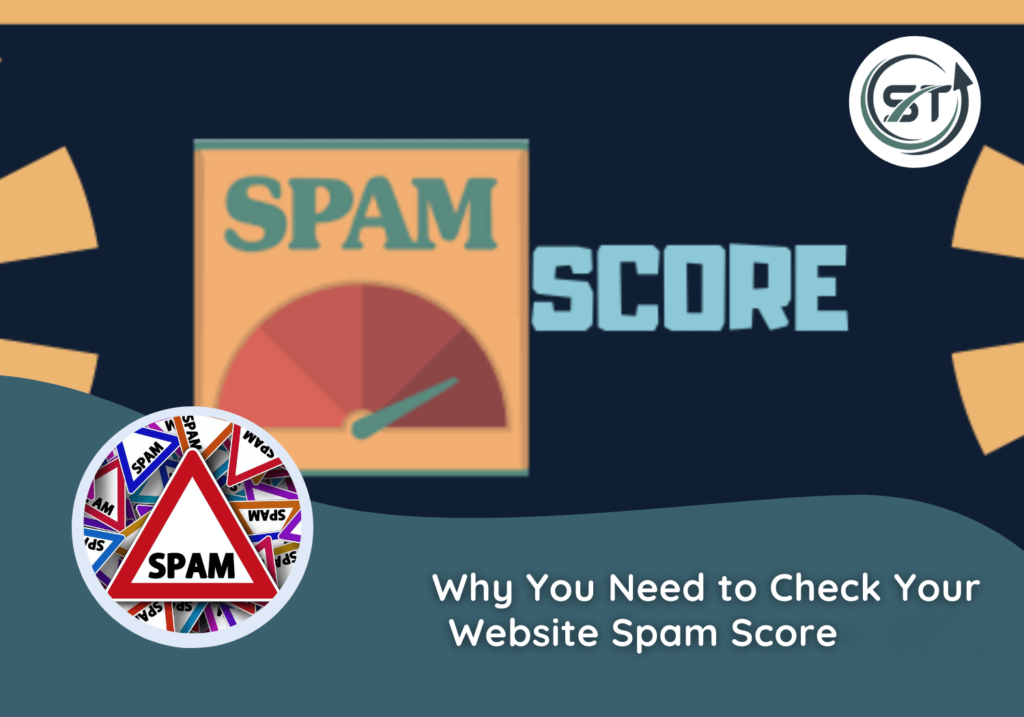
Digital marketing is enormous and covers many undefined areas each day. Since the terms used in marketing are evolving, so is Google. Various elements in digital marketing directly or indirectly affect the notions that comprise SEO, PPC, Email marketing optimization, and many more.
SEO is a broad term in digital marketing, as it is the practice of optimizing your website for Google, Bing, and other search engines. From on-page activities to backlinks and improving technical SEO errors, hundreds of factors can affect your search results if they aren’t done correctly, and Spam Score is one such factor.
As per SEO services provider, in today’s business world, the most successful websites have one thing they share that is readability. If people go to a site and don’t see what they’re seeking, they go away. If they read an email and the content is difficult to understand, they delete it and mark the email as spam.
Table of Contents
ToggleSo, what is Spam Score
The spam score is something that led to questions like: Have you recently been hit with a penalty or drop in rankings? Has your Google Webmaster Tools account been shut down, or you can’t access it?
So, the “Spam Score” is an aggregate of multiple factors that determine your website’s likelihood of penalizing by Google. The higher the value, the more likely you will be penalized by Google.
Is Spam Score Important for SEO?
Whether an SEO or content marketer, every marketer wants their website to have an optimized backlink profile. A spam score is essential for SEO because it tells you how likely a page will rank on a search engine page, considering dofollow and nofollow backlinks.
The SEO of web pages is driven by the quality of content and the number of pages linking to you. Your spam score plays a significant role in both as Google sees a high spam score for your website or links as a warning signal, which will make it less likely to rank you high in search results.
Although a single spam backlink may not significantly affect your rankings and traffic circulation, but it’s essential to be proactive in preventing spam backlinks. Such a link will only contribute to lost rankings, penalties, and deindexed by Google. So, the earlier you pick up on and eradicate spam links, the better.
How Do Spam Scores Work?
Spam Score uses Moz’s own Moz Index to consider multiple signals, including backlink and content analysis, to determine the likelihood that a page is a spam. The Spam Score for a given subdomain is the sum of its spam flags. The higher the score, the more likely it’s spam. Spam Score has a 0-100 range that places it in one of three categories were in (0% to 30%) means Low Spam Score, (31% to 60%) means Average Spam Score, and (61% to 100%) means High Spam Score.
Spam Score Signals
Signals are a new way to understand the spam score of your backlinks. It allows you to filter for spammy sites and find new ones that might be worth reaching out to. Many of the spam signals are also correlated with other spammy signals, and they are:
Low No. of Pages: Most spammy sites contain a low number of pages, and this correlation adds points to the spam score.
TLD Correlated Domains: This Site is hosted on the A top-level domain (TLD) domains like .download .wiz .win .stream and is considered spammy by Google.
Domain Length: Domain Lengths, as well as the length of sub-domain and root domain, are considered to be a possible spam pattern.
Google Tag Manager: Protect your website and increase the performance of your site by implementing tags management systems that can be integrated into the site. When Google Tag Manager is not integrated into a specific site it shows the signs of spammy.
Missing Email: The absence of your company’s email address from your website makes it appear uninformed and unprofessional. It can compromise your customer service and be treated as spam. If you have not done so already, add your company’s email address to your website to make it genuine.
Meta-Keywords: Meta-keywords aren’t necessary. They do not affect your ranking and can only hinder your search visibility. The meta keywords tag is created to indicate the subject matter of a webpage. It doesn’t seem to be a Google-related element; however, in the event of spam sites that include the meta keyword tag on their websites, they will be redirected into spam.
Page title: The page title is essential for both Search Engines and Social Sharing. The title of a page should identify its content and should neither contain a significant number of words nor a minimal number of words. Ideally, the number of characters should be between 8 and 12.
Icon: Interesting homepage images, like logos and graphics, can tell you a lot about a site. The favicon is often a clear indication of the site owner’s preferences. If a website uses a favicon, it’s much more likely to be a non-spam site.
Website age: Website age is an essential factor in evaluating its authority and credibility. The tone of the internal links should be just above the tone of the rest of the text. If your site is a new one, it makes sense to use internal links instead. In this case, you need informational texts that would tell more about each article and its uses.
Internal: By internal links, it means links from a page on your site to another page or section. If you have written your site so that each page is relevant to the one before and after, you will want to create pages that are relevant to the rest of your site and therefore encourage exploration and repeat visits. The advantage of internal links is that they move people around your website without leaving the site. Internal links are also search engine friendly – Google likes it when pages are connected by internal links, which can encourage a “flow” through your website, rather than a “clutter.”
External link: It can be helpful by using external links to benefit your site; however, don’t overdo it. Your website will not be highly ranked if you have hyperlinks that could be viewed as spammy.
Website Content: Site content is a particular area of information that you want to put online. Your content is the lifeblood of your website. The content for the website should be organized so that the visitor can find the information they are looking for easily. Irrelevant and incomplete information negatively impacts the visitor, leading them to switch to another website that provides better content. For example, when creating compelling website content, you can refer to professional custom web design services that ensure your site meets these standards.
Ways to reduce the spam score of your domain:
Avoid bad backlinks
Bad backlinks are those that direct users to your website and redirect users to unsuitable sites. Backlinks are not only crucial for the ranking of your site, but bad backlinks can also ruin your reputation. If you create links in places like chat forums, guestbooks, or blog comments, you may likely to have bad backlinks. Avoid the chance of getting your site penalized by search engines like Google, Yahoo, and Bing by avoiding bad backlinks. There are some backlinks you should avoid while connecting to your website are as follows:
- Penalized domains
- Links from different link directories
- Links from foreign language sites
- Links from unrelated websites
- A large amount of exact-match anchor text links
Ignore dodgy domain extensions
Beware of domains with a bad reputation as unreliable and often ignored methods to reduce your spam score. Beware of spammy-looking domains as it is suggested to use an extension of top-level that can build trust in search engines such as .com. Top-level domain extensions such as .info, .biz, .us, .rest, .buzz, and many more are frequently utilized by spammers. You’ll be better off if you steer away from these domain extensions.
Further Reading : Best SEO Extensions for Google Chrome
Do not use a long domain name
Be aware of the number of characters you are using in a domain name. Most people want to keep it a little simple when typing a domain name. When selecting a domain name, context is everything. Don’t use all the characters you get to play with; leave a little something for the imagination. If you must use them all up, at least do it with elegance. Most domains can be up to 255 characters in length, which is pretty generous. But you don’t need so many; 42 looks to be the optimal number of characters.
Include the phone number, email address, and other social media links
Including a valid phone no., email address, and other social media links makes the website more genuine, as these are all things that junk websites rarely have. Therefore, if you would like to send a hint to Google that your website is secure and legit, then incorporate some or all these on it. Another great reason to add a contact us page for easy navigation.
Ignore ‘poison’ words
One of the things you should focus on is avoiding ‘poison’ words. Poison words to avoid are key phrases that are used by spam websites. These are words and phrases identified by search engines to be signs of a low-quality site or potentially dangerous. These phrases will likewise trigger spam-filtering systems to flag your site for review by the search engines, each of which will address the issue generically rather than at the particular web page.
Get HTTPS
You may be wondering why you should care about getting https; it’s because of the website’s security. Google has been ranking sites with https as more secure than ones with http, including having a greater likelihood of enforcing HTTPS everywhere is a good way. This will help with SEO, and as most spam sites don’t bother with https, it sends a clear signal to Google that your site is safe. For a quick guide on converting your website from HTTP to HTTPS, check out our comprehensive guide
Using a Disavow Tool
In some circumstances, you may have no control over spammy site backlinks to your website, positively or negatively impacting your rankings. In situations like this, Google allows you to use their Disavow Tool.
Using a disavow tool allows webmasters to tell Google to disregard particular links as specified by them. It is not easy to use, but it effectively ensures that your site will not be penalized. Google’s Disavow Tool is designed to help you address unnatural links pointing to your site. It allows you to upload a list of bad links, and Google will use the data to understand your site better and weed out spam.
Wrapping Up
As per SEO services expert, the spam score is a big problem for any website, and it can be challenging to deal with. If you want to avoid spam score penalties and improve the quality of your website, then we should remember to make your pages easy to crawl, never make the content look spammy and follow the Moz guidelines.
Also read: Voice Search SEO












